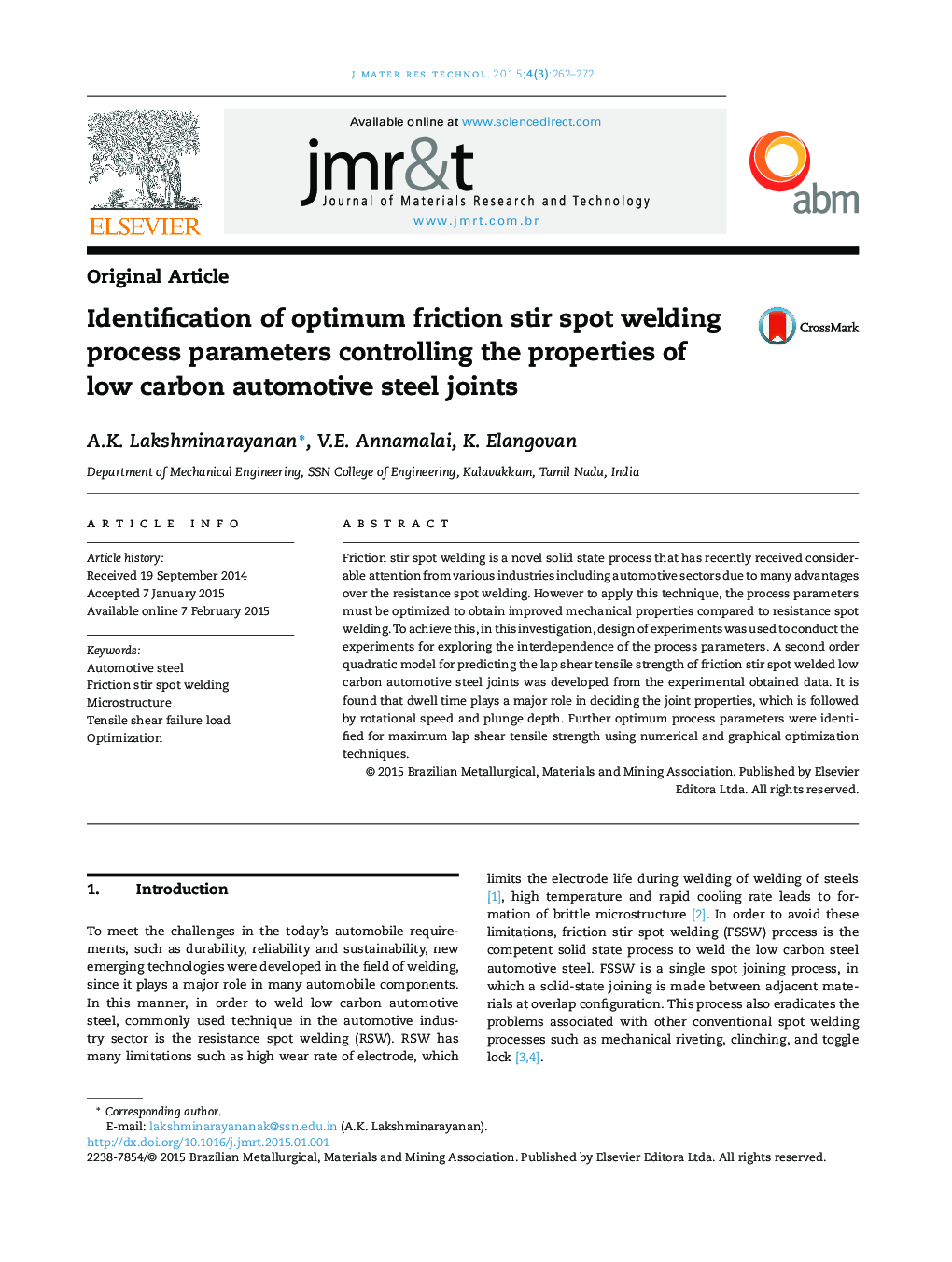| Article ID | Journal | Published Year | Pages | File Type |
|---|---|---|---|---|
| 1479892 | Journal of Materials Research and Technology | 2015 | 11 Pages |
Friction stir spot welding is a novel solid state process that has recently received considerable attention from various industries including automotive sectors due to many advantages over the resistance spot welding. However to apply this technique, the process parameters must be optimized to obtain improved mechanical properties compared to resistance spot welding. To achieve this, in this investigation, design of experiments was used to conduct the experiments for exploring the interdependence of the process parameters. A second order quadratic model for predicting the lap shear tensile strength of friction stir spot welded low carbon automotive steel joints was developed from the experimental obtained data. It is found that dwell time plays a major role in deciding the joint properties, which is followed by rotational speed and plunge depth. Further optimum process parameters were identified for maximum lap shear tensile strength using numerical and graphical optimization techniques.
